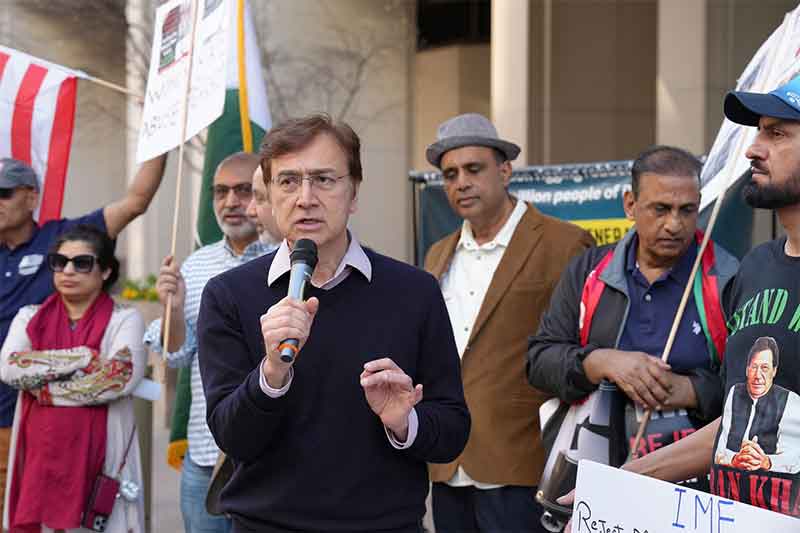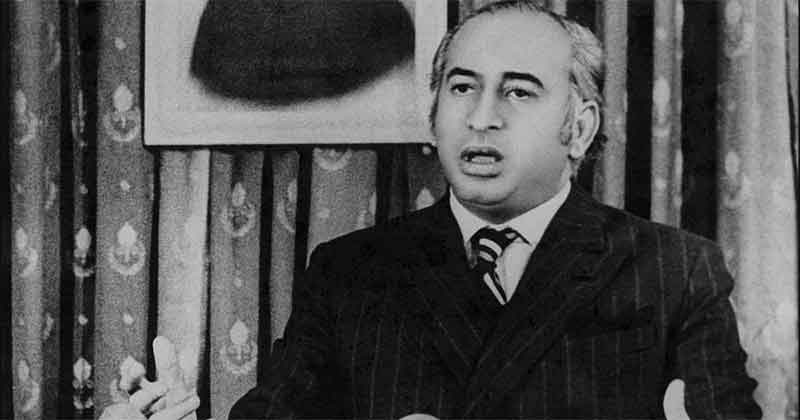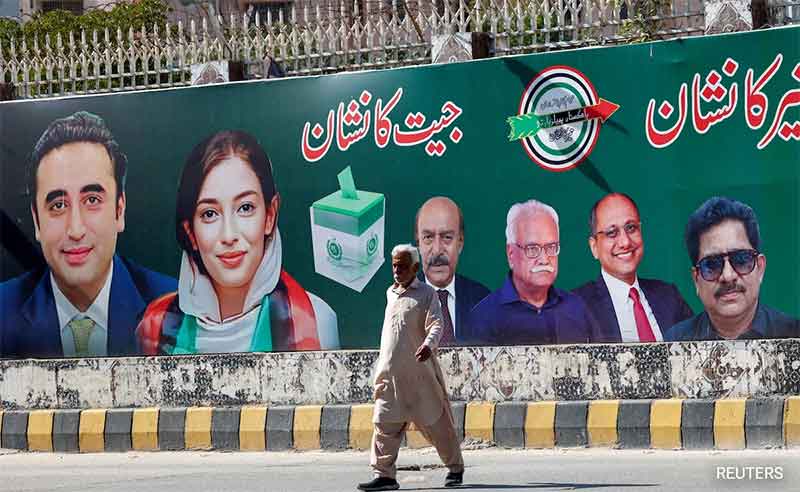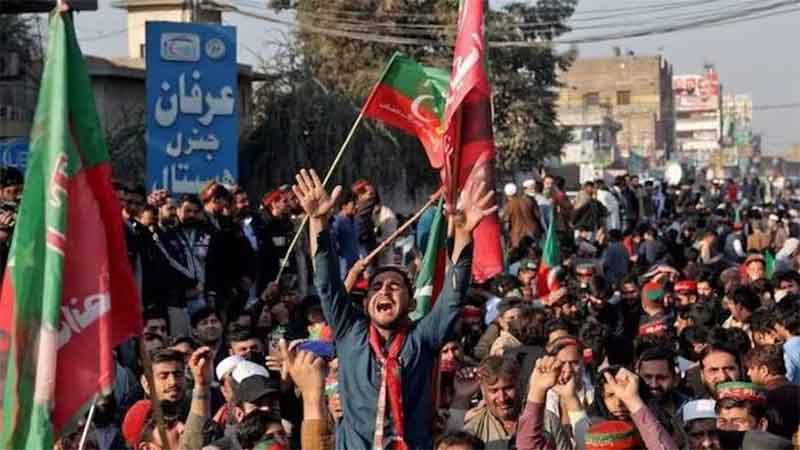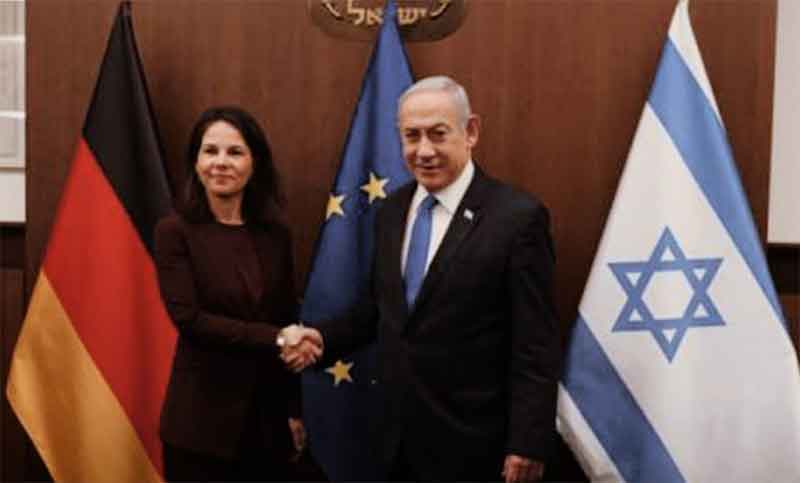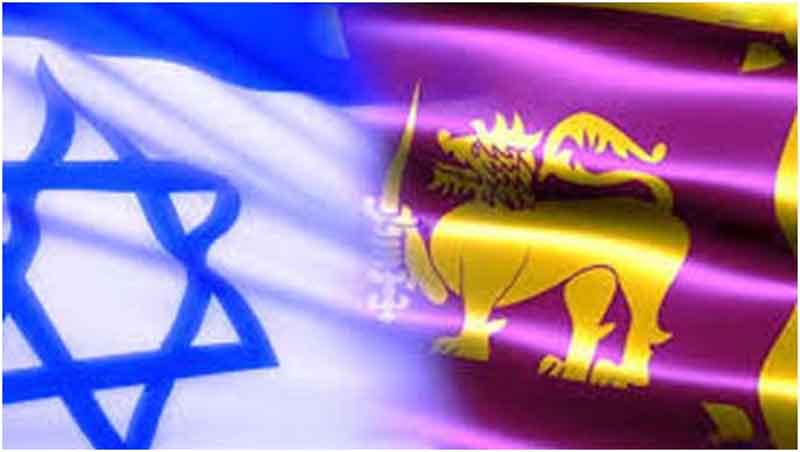
On January 10, 2022, National Security Advisor (NSA) Moeed Yusuf said, “It [Pakistan] is still not [free from US influence] and I doubt that there is any country which is free from it.” He added that the country does not have any financial independence, being dependent on loans from International Monetary Fund (IMF) and other foreign organizations. “When we cannot [fulfill] the demands, we seek foreign loans. When you procure loans, your economic sovereignty is compromised.” These comments are not entirely stunning; they encapsulate the ambivalent essence of the US-Pakistan relationship. While the Pakistani elite greatly enjoys its self-imposed subservience to the American empire, it never just sits back and rest on its laurels. It continuously tries to exploit what little room for maneuver it has within the bond of servility to further more selfish, regional interests – ones which either demand too much from the patron or don’t neatly align with the US’ hegemonic ambitions.
Anticommunism
Unlike the many postcolonial nations of the time which exuded a great degree of interest in the development of an independent project, Pakistan was totally craven; its creators displayed a surprising lack of enthusiasm in the paraphernalia of sovereignty. They were only interested in somehow securing money, regardless of the consequences which the people would have to face later. Every option was on the table. In The Duel: Pakistan on the Flight Path of American Power, Tariq Ali notes that “the new rulers of Pakistan developed an early communal awareness that to survive they had to rent their country.” Washington was approached as a possible buyer but it rejected the offer to buy Pakistan “as it was busy securing Western Europe and Japan, as well as keeping an eye on China, where the Eighth Route Army was beginning to threaten a Communist victory.” However, this did not stop Pakistan from trying to sell itself.
Muhammad Ali Jinnah, the founder of Pakistan, continued to consistently market his country as an important ally against Soviet expansionism. Ali remarks that he hysterically “insisted that Soviet agents were present in Kalat and Gilgit in search of a base in Baluchistan.” These same sentiments were shared in a more sophisticated manner by then foreign minister Zafarullah Khan. “[H]e pleaded with the United States to shore up Pakistan, whose people were genetically anticommunist, since this was the best way to protect India against the Soviet Union, which would send its armies through the Khyber Pass.” Pakistan’s persistence in peddling threats about USSR paid off in May 1954 when it signed the Mutual Defense Assistance Agreement, through which the US provided resources and training to the Pakistani army, with the general aim of turning the new nation into a pliant Third World state. In September 1954, Pakistan was officially anointed as a crusader against the godless Communists, joining the Southeast Asia Treaty Organization together with Thailand and the Philippines.
Exactly one year later, in September 1955, Pakistan joined another pro-Western organization known as the Baghdad Pact, which included King Faisal’s Iraq, Iran, Turkey, and Britain. As Pakistan chummed up with its anti-Soviet friends, the inflows of money into the ruling class’ pockets increased. From 1953 to 1961, Pakistan received around $2 billion in assistance from the US. These wads of cash, however, did not signify a thoroughgoing bilateral camaraderie, one in which the imperialist benefactor would come to the help of its junior partner at all cost. Apart from acting as another chess piece in the anticommunist game, Pakistan served no other significant function for USA. Therefore, the latter felt no need for fulfilling all the demands of the former. In fact, what happened during the initial years of 1960s was the opposite. In United States and Pakistan in the 21st Century: Geostrategy and Geopolitics in South Asia, Syed Tahseen Raza writes:
The Sino-Indian Border struggle in 1962 paved the way for closer US-India ties because neutral India, desperate to have weapons in the immediate aftermath of Chinese aggression, made a frantic plea for US help. The US was pleased because this was an opportunity to wean India off the influence of the Soviet Union by offering help in a time of crisis. Meanwhile, Pakistan’s inching closer with China was not liked by the United States. When American finally decided to give arms aid to India in November 1962, Pakistan was not consulted before as was promised to them and this deeply offended the leaders of Pakistan. The [John F.] Kennedy administration, on the whole, tried to balance the American relationship with South Asia on equal footing and therefore did not view Pakistan as more important than India.
Feeling threatened by USA’s growing closeness with India, Pakistan extracted from the former, on November 5, 1962, a pledge “that it will come to Pakistan’s assistance in the event of aggression from India.” This pledge, nonetheless, did not help Pakistan during the Second Kashmir War (1965) when it undertook dangerous military adventures (Operation Gibraltar and Operation Grand Slam) against India. When the war started, the US cut aid to both Pakistan and India. A similar situation developed six years later. When New Delhi decisively intervened in East Pakistan’s civil war in late 1971, Washington was unwilling to directly support the Pakistani army’s Operation Searchlight against Bengali insurgents (though it did send part of its Seventh Fleet in the Bay of Bengal). The country’s eastern wing seceded to form the state of Bangladesh, dismembering Pakistan in a humiliating way. Spurred by this defeat, Pakistan’s governing caste realized that the continued existence of the nation was dependent on nuclear parity with India.
The development of nuclear weapons was smoothed by conjunctural reasons. In neighboring Afghanistan, the communists, who had backed the 1973 military coup by Prince Daoud after which a republic was proclaimed, withdrew their support from him. In April 1978, the Shah of Iran convinced Daoud to turn against the communist factions in his army and administration. In response to increasingly harsh state repression, left-wing officers in the military stormed the Presidential Palace in Kabul. The government was turned over to Noor Mohammed Taraki, a communist professor who became the President of the Revolutionary Council of Afghanistan. These developments – which were extensively supported by the USSR – came to be known as the Saur (April) Revolution. The US was terrified. It crafted a subversive plan that made General Zia’s dictatorship in Pakistan a principal node for sending jihadists to Afghanistan. Singularly focused on destabilizing Afghanistan’s communist regime, and, by extension, Soviet Union, USA cared less about Pakistan developing its nuclear programme in the 1980s.
War on Terror
America’s benign attitude toward Pakistan changed with the Soviet withdrawal from Afghanistan and the ultimate end of the Cold war. “[S]ans the American aim of defeating communism as their top priority,” comments Raza, “Pakistan was not given any extra consideration.” The “US Intelligence Report,” which had been indicting Pakistan for its nuclear quest, came to be invoked more frequently. When India conducted its Nuclear Test in March 1998, the Bill Clinton administration tried to prevent Pakistan from following suit, offering the resumption of the sale of F-16 aircraft (which had been frozen by George H.W. Bush when he did not certify Pakistan’s non-possession of nuclear devices) and economic and military aid. But Pakistan demanded more. Raza remarks: “Pakistan wanted tough punitive action against India. When the G-8 meeting on 17-18 May 1998 didn’t take very harsh measures against India in accordance with Pakistan’s expectations, bowing to public pressure, Pakistan decided to go for the Nuclear Test, which it ultimately carried out on 28 May, 1998.”
In response to Pakistan’s nuclear test, the US imposed sanctions, which included restriction of the provision of credits, military sales, economic assistance, and loans. These were, nevertheless, limited in scope and were not sustained. US-Pakistan relations exited this period of downturn in an explosive manner after 2001, thanks to the murky dynamics cultivated by imperialism in Afghanistan. After the USSR left in 1988, Pakistan maintained a strong footprint in Afghanistan to gain “strategic depth” against India, continuing to nurture the Islamist extremism that was earlier used to mobilize jihadist fighters from all over the world against USSR. These actions had severe repercussions. When hardhats of jihadism attacked New York in 2001 to express their disgruntlement with America’s bases in Saudi Arabia, the destruction of Iraq and support for Israel, Pakistan was caught in a dilemma. Networks of battle-hardened fighters that it had built along with the USA were now on the attack radar of its imperialist sponsor.
With limited options, Pakistan decided to join the US War on Terror, declaring support for the Hamid Karzai government in Kabul. “By providing the USA with help in the invasion of Afghanistan,” Justin Podur clarifies, “Pakistan was able to save its clients and its own personnel from destruction, as much of the Taliban and al-Qaeda crossed the border to Pakistan or went to ground and Afghanistan was taken over by US-friendly warlords.” This tactical move had its own disruptive consequences for Pakistan’s social osmosis. General Pervez Musharraf came to be accused of treason for supporting the USA against fellow Muslims in Pakistan and Afghanistan. This political effect complicated military operations. As the US and North Atlantic Treaty Organization (NATO) made the Pakistan army take action against insurgents operating in Khyber Pakhtunkhwa, casualties increased, eroding the state’s legitimacy in the region. When Pakistan cooperated with the insurgents on the sly, it faced US threats.
Conflicts
The convoluted workings of the War on Terror have had a destructive impact on Pakistan’s economy. It has lost $150 billion – 41% or two-fifths of the country’s total economy size, more than the $13 billion that it received from the US between 1999 and 2013. Since the US invasion of Afghanistan, more than 80,000 Pakistani civilians, security forces personnel and women and children have been killed in gun, bomb and suicide attacks. On average, every year Pakistan suffered losses of $7.7 billion – more than the country’s total expenditures on education, health and other social safety schemes. With the growing advance of the Taliban in Afghanistan, current Pakistan Prime Minister Imran Khan wrote an op-ed in the Washington Post in September 2021, saying: “Since 2001, I have repeatedly warned that the Afghan war was unwinnable. Given their history, Afghans would never accept a protracted foreign military presence, and no outsider, including Pakistan, could change this reality. Unfortunately, successive Pakistani governments after 9/11 sought to please the United States instead of pointing out the error of a military-dominated approach.”
Scarred by the War on Terror, Pakistan has been frustrated to see USA establish an alliance with India as part of an anti-China containment strategy. The US and Indian elites have found a common interest in countering China; India is embroiled in disputes on its land borders with China and the US and its allies are contesting China’s claim to maritime territories across shipping routes in the Indo-Pacific region. It is against this background that Pakistan has returned to China’s “all-weather friendship,” initiated in the 1960s by General Ayub Khan who felt betrayed by Washington’s overtures to India in the aftermath of the Sino-Indian border conflict. China has become Pakistan’s closest strategic ally, supplying it with modern defense equipment. Pakistan supports China’s stance on Xinjiang, Tibet and Taiwan, and China backs Pakistan on its Kashmir issue with India. Over the past five years, this cooperation has been further cemented by China’s Belt and Road Initiative (BRI) and its local cognate China-Pakistan Economic Corridor (CPEC), entailing over $60 billion worth of Chinese investments in infrastructure consisting mostly of loans.
Despite the economic heft of China, Pakistan still needs Washington’s support, both to get disbursements of its $6 billion bailout package from the IMF and to be removed from the terror-financing and money-laundering watchdog Financial Action Task Force’s “grey list,” a designation that encumbers Islamabad’s global financial operations. War on Terror cooperation had converted Pakistan into a major non-NATO ally of the US in 2004, granting it various military and financial privileges. The designation had also eased Pakistan’s access to IMF facilities. With the deterioration of Pakistan’s relationship with USA, accessing funds has become difficult. In October-November 2021, IMF withheld the release of a $1 billion tranche under an Extended Fund Facility (EFF) to Pakistan until the government agreed to close commercial bank accounts held by the armed forces and other state entities and remitted $17 billion worth of public funds into a single treasury account. It is believed that USA, the single largest financial contributor to the IMF, had a hand in the reform demands.
In a June 2021 interview on HBO’s documentary news series Axios, Khan had said, “Pakistan will “absolutely not” allow the CIA to use bases on its soil for cross-border counterterrorism missions after American forces withdraw from Afghanistan.” To change this policy decision, USA started using IMF monetary policy as a bargaining chip to force cash-strapped Islamabad to agree to Joe Biden administration’s counterterrorism operations in Afghanistan. These events highlight the conflictual nature of the contemporary US-Pakistan relationship. And it seems that both the parties have failed to arrive at a proper resolution till now. Yusuf’s criticism is significant in this regard as he was the one chosen for mending ties with the US. He has spent a decade or more in the think tank and security policy circle in the US capital as associate vice president for Asia at the Institute of Peace, a US government-backed institution. The Pakistani government had recently elevated him from the position of Special Assistant to the Prime Minister to NSA to signal seriousness in creating a new rapport with the US. It seems that Pakistan will have to wait longer for such a reset in relationships.
Yanis Iqbal is an independent researcher and freelance writer based in Aligarh, India and can be contacted at [email protected].
Originally published in Dissident Voice

